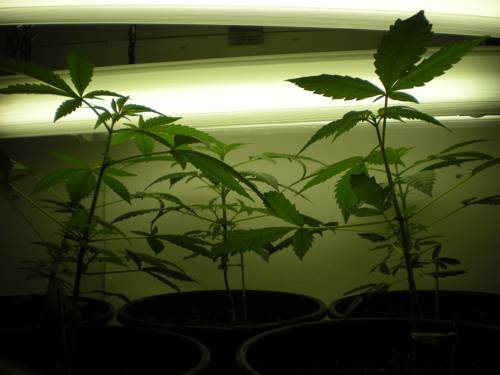
FAQ About Indoor Plant Seasonal Lighting Optimization

Why is seasonal lighting important for indoor plants?
Seasonal lighting is crucial because indoor plants have evolving light requirements throughout the year, similar to their outdoor counterparts. The intensity and duration of natural light change with the seasons, affecting plant growth patterns. By optimizing indoor lighting, you help ensure they receive the appropriate light conditions needed for crucial processes like photosynthesis, which supports healthy plant growth, development, and flowering.

How do indoor plants adjust to different seasons?
Indoor plants adjust to different seasons primarily through changes in their light requirements and growth cycles. During the spring and summer, most plants enter an active growth phase, requiring higher light intensity and longer exposure. In contrast, the fall and winter often bring a period of dormancy or slower growth, during which plants may benefit from a reduced light intensity or shorter lighting periods to mimic the natural changes in daylight.

What types of artificial light are best for indoor plants through different seasons?
LED grow lights are highly versatile and energy-efficient, making them a popular choice for year-round indoor plant care. They can be adjusted for both spectrum and intensity to mimic seasonal changes. Fluorescent lights, especially those labeled as full-spectrum or daylight, are also beneficial for indoor plant growth across seasons, though they are less energy-efficient compared to LEDs. High-intensity discharge lamps (HID) are suitable for plants with high light requirements but may need adjustments and additional cooling due to their heat output.

How can I determine the correct placement for indoor plant lighting?
The correct placement of indoor plant lighting depends on the type of plant and its light needs. Generally, lights should be positioned so that they provide even coverage over the plant area without shadowing any parts. For most plants, lights should be placed 6 to 12 inches above the foliage. However, for high-light-requiring plants, such as succulents, lights may need to be placed closer, while shade-loving plants might require a greater distance. Adjust these positions as needed throughout the seasons to accommodate changes in natural light through windows.

How does exposure time of indoor plant lighting affect growth across seasons?
Exposure time, or photoperiod, significantly affects plant growth, signaling whether to grow, flower, or enter dormancy. During the longer days of spring and summer, extending artificial light exposure to mimic 14-16 hours of daylight can encourage active growth. Conversely, in fall and winter, reducing the light period to about 10-12 hours can help simulate natural short days, promoting dormancy or slower growth as needed by the plant.

What are common mistakes in indoor plant lighting throughout the seasons?
One common mistake is failing to adjust light intensity or exposure time with seasonal changes, leading either to insufficient light or light burn. Additionally, using the wrong light spectrum can hinder a plant's ability to photosynthesize effectively. Spots and shadows created by poorly positioned lights can also result in uneven growth. It's crucial to regularly assess and adjust lighting setups based on the specific growth stage and seasonal requirements of the plants.

Can seasonal lighting impact plant flowering indoors?
Yes, seasonal lighting can significantly impact flowering in indoor plants. Many flowering plants are sensitive to changes in light duration (photoperiod) and intensity. Implementing proper seasonal adjustments, such as increasing light exposure in spring to simulate longer daylight hours, can stimulate blooming. Conversely, reducing light exposure in autumn can encourage flowering in short-day plants like poinsettias.

How do I measure light intensity for indoor plants across different seasons?
Light intensity for indoor plants can be measured using a light meter, which provides readings in foot-candles or lux. This allows you to adjust your artificial lighting to ensure your plants receive consistent, adequate light levels throughout the year. Smartphone apps are also available that use your phone’s camera to estimate light intensity, though they may be less accurate. Regular measurement helps maintain optimal conditions as natural daylight varies with the seasons.

Do all indoor plants need the same seasonal lighting adjustments?
No, different indoor plants have varying light requirements and may not need identical seasonal lighting adjustments. For example, succulents and cacti typically require more light year-round compared to foliage plants like ferns, which might thrive with less intense light. It's important to research the specific needs of each plant species to tailor your lighting adjustments effectively for optimal growth and health.

How can I simulate seasonal changes for indoor plants in a windowless room?
In a windowless room, simulating seasonal changes involves adjusting light intensity, spectrum, and exposure using artificial lights. Implement grow lights with adjustable settings to replicate the longer daylight hours in spring and summer, and reduce the photoperiod in fall and winter to emulate the shorter days. Using timers can help automate these changes to ensure a consistent lighting schedule that mirrors natural seasonal shifts.

What light spectrum should I use for indoor plant growth in different seasons?
To promote indoor plant growth, a full-spectrum light that includes all colors of light, similar to natural sunlight, is ideal year-round. During the plant's vegetative growth phases, emphasize blue light (around 400-500 nm) to encourage leafy growth. In flowering stages, shift towards red light (around 600-700 nm) to boost blooming. Adjusting these colors in tune with seasonal requirements can optimize plant health and productivity.

How important is it to use timers for seasonal lighting adjustments for indoor plants?
Using timers is highly beneficial for managing seasonal lighting adjustments for indoor plants. Timers automate the process of adjusting light exposure according to the plant's needs, ensuring consistent and precise control over photoperiods. This helps prevent human error and provides stability for the plant's growth cycles, aligning closely with seasonal changes in daylight hours.

Should I change the lighting distance from plants during different seasons?
Yes, adjusting the lighting distance from plants during different seasons is often necessary. As seasons change, so does the natural light intensity, which may require you to move lights closer during times of less natural daylight (like winter) and further away when more sunlight is available (such as in summer). This helps ensure the plants receive enough light for photosynthesis while avoiding light stress or burn.

Can optimizing seasonal lighting help reduce plant stress?
Yes, optimizing seasonal lighting can help reduce plant stress by providing appropriate light conditions that align with natural seasonal changes. Proper lighting supports healthy photosynthesis, growth, and flowering, helping plants maintain strong, resilient structures. This minimizes stressors associated with inadequate or excessive light, leading to a healthier indoor plant environment.

How effective are LED lights for seasonal lighting adjustment for indoor plants?
LED lights are very effective for seasonal lighting adjustment due to their energy efficiency, longevity, and ability to provide full-spectrum lighting. Many LED grow lights offer customizable settings that allow for adjustments in light intensity and spectrum, facilitating precise control over the conditions needed for different plant stages and seasonal changes. They also produce less heat, reducing the risk of overheating the plants.

Can daylight bulbs be used to mimic seasonal changes for indoor plants?
Yes, daylight bulbs can be used to mimic seasonal changes for indoor plants. These bulbs are designed to replicate natural daylight and are often full-spectrum, making them suitable for providing the light conditions required for plant growth throughout the year. However, it's important to pair these bulbs with timers or other control systems to adjust light duration in accordance with seasonal daylight variations.

How can I troubleshoot lighting issues with indoor plants during seasonal transitions?
To troubleshoot lighting issues during seasonal transitions, monitor your plants for signs of stress such as yellowing leaves, stunted growth, or leaf drop, which can indicate inappropriate lighting conditions. Check the positioning, intensity, and duration of your lighting setup and adjust as needed. Evaluating the specific requirements of each plant and ensuring your lighting equipment is functioning properly are key steps in resolving these issues.

What role does natural sunlight play in indoor plant lighting optimization?
Natural sunlight plays a vital role in indoor plant lighting optimization by providing the full spectrum of light that most artificial sources aim to mimic. When available, natural sunlight can supplement artificial lighting to promote healthier, faster growth across all seasons. Ensuring your indoor setup allows for maximum sunlight exposure can enhance plant health and should be considered when arranging artificial lighting.

What factors should be considered when choosing lighting for indoor plants with varying seasonal needs?
When choosing lighting for indoor plants with varying seasonal needs, consider the light intensity, spectrum, and energy efficiency of the bulbs. Determine the specific needs of your plant species for each season, such as the required photoperiods and light spectrum for growth and flowering. Also, prioritize adjustable lighting systems like LEDs that can be fine-tuned to mimic seasonal changes effectively.

How can I maintain consistent lighting conditions for indoor plants during seasonal changes?
To maintain consistent lighting conditions for indoor plants during seasonal changes, use programmable timers and adjustable lights. Regularly measure light intensity and adjust spectrum settings on grow lights to reflect changes in daylight hours and intensities typical of each season. Ensuring your lights are properly positioned and making timely adjustments based on plant feedback can help maintain optimal conditions.
